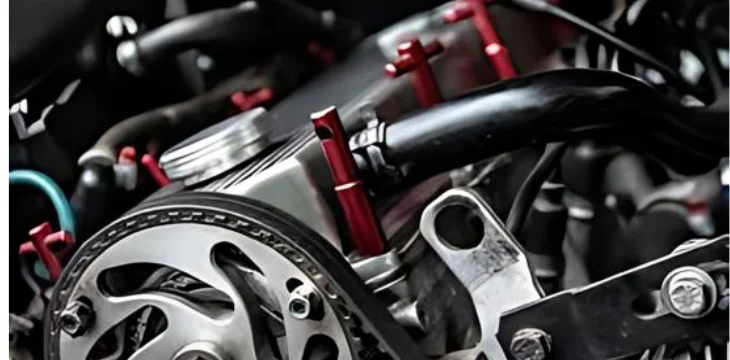Everything You Need to Know About 49.2.5 A/C Belt Replacement: A DIY Guide

Introduction
Summer’s here, and there’s nothing 49.2.5 a/c belt replacement worse than hopping into your car only to be greeted by a blast of hot air. Yikes! But before you panic and assume your air conditioning is kaput, consider the possibility that your 49.2.5 A/C belt might just need replacing. Yep, that little belt plays a huge role in keeping your car cool, and when it starts to wear out, your A/C system can act up like a teenager on a Monday morning.
In this article, we’ll dive into everything you need to know about the 49.2.5 A/C belt replacement. We’ll explore why it’s important, how to recognize when it needs changing, and how you can replace it yourself without breaking a sweat. Whether you’re a seasoned DIY enthusiast or just someone who wants to save a few bucks on car repairs, this guide is for you!
What is the 49.2.5 A/C Belt?
Understanding Your Car’s A/C System
Before we jump into the specifics of the 49.2.5 A/C belt, let’s take a quick detour to understand how your car’s A/C system works. It’s not just about keeping you cool; it also plays a role in defogging your windshield and improving the overall comfort of your ride.
Here’s a simplified breakdown of how the A/C system works:
- Compressor: The heart of the system that pumps refrigerant through the circuit.
- Condenser: Converts refrigerant from gas to liquid, releasing heat in the process.
- Evaporator: Absorbs heat from the cabin, allowing cool air to circulate.
- Expansion Valve: Controls the flow of refrigerant into the evaporator.
- A/C Belt: Powers the compressor by connecting it to the engine.
The 49.2.5 A/C belt is a specific model or part number that refers to a particular type of belt used in some vehicle models. It’s like the unsung hero of your car’s cooling system, quietly doing its job until something goes wrong.
Why the 49.2.5 A/C Belt Matters
The A/C belt is essential because it drives the compressor. Without it, the compressor won’t function, and your A/C system won’t be able to cool your car. Over time, the belt can wear out, crack, or even snap, leading to inefficient cooling or complete failure.
Signs Your A/C Belt Needs Replacement
- Squealing Noise: Hear an annoying squeal when you turn on the A/C. That’s often the belt telling you it’s wearing out.
- Reduced Cooling: If your A/C isn’t cooling as it used to, a worn-out belt could be the culprit.
- Visible Wear and Tear: Inspect the belt for cracks, fraying, or glazing. If you see any of these signs, it’s time for a replacement.
- A/C Compressor Not Engaging: If the compressor doesn’t engage when you turn on the A/C, a broken belt might be to blame.
Preparing for the 49.2.5 A/C Belt Replacement
Tools and Materials You’ll Need
Replacing the 49.2.5 A/C belt isn’t rocket science, but you’ll need the right tools and materials to get the job done smoothly. Here’s what you’ll need:
- New 49.2.5 A/C belt
- Socket wrench set
- Belt tensioner tool (optional but handy)
- Screwdrivers
- Gloves
- Safety glasses
Safety First!
Before you start tinkering under the hood, let’s have a little chat about safety. It’s easy to get caught up in the excitement of fixing things yourself, but safety should always be your number one priority. Here’s a quick safety checklist:
- Disconnect the Battery: This prevents any accidental electrical shocks.
- Allow the Engine to Cool: Working on a hot engine is a no-go. Let it cool down first.
- Wear Protective Gear: Gloves and safety glasses are a must to protect yourself from any mishaps.
- Read the Manual: Your car’s manual is your best friend. Check for any specific instructions related to the A/C belt replacement.
The Step-by-Step Guide to 49.2.5 A/C Belt Replacement
Now that you’re all geared up and ready to roll, let’s dive into the step-by-step process of replacing that pesky A/C belt.
Step 1: Locate the A/C Belt
The first thing you’ll need to do is locate the A/C belt under the hood. It’s usually found at the front of the engine, running over several pulleys. Grab a flashlight if you’re having trouble spotting it.
Step 2: Inspect the Old Belt
Before removing the old belt, take a close look at it. Check for any visible signs of wear and tear. This will give you a better understanding of whether the belt was indeed the problem.
Step 3: Release Tension on the Belt
Use a socket wrench or belt tensioner tool to release the tension on the belt. You’ll usually find a tensioner pulley that can be adjusted to loosen the belt. Be gentle, though – you don’t want to damage any other components.
Step 4: Remove the Old Belt
Once the tension is released, carefully slide the old belt off the pulleys. Pay attention to how it’s routed, as you’ll need to follow the same path when installing the new belt.
Step 5: Install the New 49.2.5 A/C Belt
Now comes the fun part! Take your shiny new 49.2.5 A/C belt and thread it through the pulleys, following the same route as the old belt. Ensure it sits properly on each pulley groove.
Step 6: Adjust the Tension
With the new belt in place, adjust the tensioner to apply the right amount of tension to the belt. It should be tight enough to avoid slipping but not so tight that it puts strain on the pulleys.
Step 7: Double-Check Everything
Before you call it a day, double-check everything. Ensure the belt is seated correctly, and all tools are removed from the engine bay. Reconnect the battery and give the engine a test run.
FAQs About 49.2.5 A/C Belt Replacement
How often should I replace the A/C belt?
The A/C belt should typically be replaced every 50,000 to 70,000 miles, but it’s a good idea to check your vehicle’s manual for specific recommendations.
Can I drive without an A/C belt?
Technically, yes, you can drive without an A/C belt, but you’ll lose your air conditioning. Plus, some vehicles have the A/C belt integrated with other systems, so it’s best to fix it ASAP.
What happens if the A/C belt breaks while driving?
If the A/C belt breaks while driving, you might lose air conditioning and hear a flapping noise. In some cars, this could also impact other systems, so pull over and get it fixed as soon as possible.
Is it hard to replace the A/C belt myself?
Not at all! With the right tools and this guide, replacing the A/C belt is a straightforward task you can tackle yourself.
Tips for Maintaining Your A/C System
Replacing the 49.2.5 A/C belt is a great start, but maintaining your entire A/C system will keep your car cool and comfortable. Here are a few tips to keep things running smoothly:
- Regular Inspections: Check the A/C belt and other components regularly for signs of wear.
- Clean the Condenser: Remove any debris or dirt from the condenser to improve efficiency.
- Run the A/C Frequently: Even in winter, run your A/C every couple of weeks to keep the system lubricated.
- Check Refrigerant Levels: Ensure the refrigerant is at the correct level to prevent strain on the system.
Conclusion
Congratulations! You’ve made it through the ultimate guide to 49.2.5 A/C belt replacement. Not only have you learned the ins and outs of your car’s A/C system, but you’re now equipped to tackle the replacement yourself.
Remember, a well-functioning A/C system isn’t just a luxury; it’s essential for a comfortable ride, especially during those sweltering summer months. By keeping an eye on your 49.2.5 A/C belt and performing regular maintenance, you’ll enjoy a smooth and cool drive wherever the road takes you.
So grab your tools, get under that hood, and show that A/C belt who’s boss. Happy fixing!



